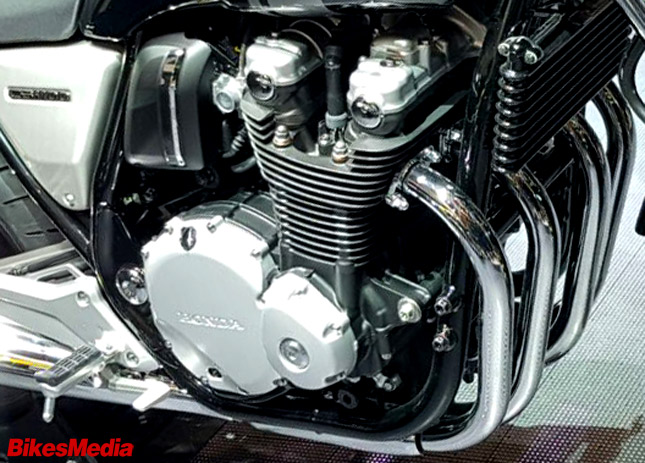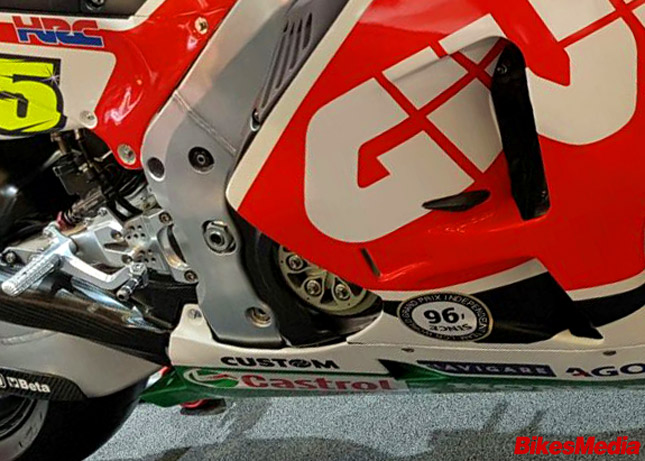Ever knew that there are mainly two types of clutches featured on your ride? A wet clutch and a dry clutch. Most of the motorcycles seen on the Indian roads sport only a wet clutch. Dry clutch is seen on motorcycles brands like Ducati, Moto Guzzi uses a dry clutch. The dry clutch sounds like there is a small tractor inside the motorcycle, but it provides better power to the rear wheels.
Wet Clutch: The word 'wet' indicates that the clutch will actually be immersed into some kind of solution. Yes, the clutch is bathed in the engine oil. This helps to reduce friction and also helps in cooling the clutch plates sooner. It enables lubrication between the clutch cage and the mating parts.
The word 'wet' indicates that the clutch will actually be immersed into some kind of solution. Yes, the clutch is bathed in the engine oil. This helps to reduce friction and also helps in cooling the clutch plates sooner. It enables lubrication between the clutch cage and the mating parts.
For a beginner the wet clutch makes the best choice, it is easier to use and is far smoother than the dry clutch. The oil used for the wet plate clutches are more advanced than the regular engine oils. The oil is formulated for better viscosity for a longer life. The oil must be formulated in such a way that it must beat the heat generated by the clutch plate.
RELATED ARTICLE: Dry Type Clutch V/s Wet Type Clutch
The contact is bigger than the dry clutch with a smaller diameter. The slipping is very minimal during shifts. The wear and tear of the material are lesser on the wet plate clutch when compared to the dry clutch. The pressure between plates is bigger due to the hydraulic pressure created, but in the dry plate the spring provides the pressure and is considerably lesser than the pressure created on the wet plate. These kinds of clutches are easier to damp. The plates can get damaged if the oil level is low or if the wrong grading of the oil is used. Worn rings on the pressure plate can reduce the RPM that is produced. Worn hydraulic pumps or a clogged filter can also affect the performance.
Dry Clutch: Dry clutches are exposed to the atmosphere and do not require any lubrication unlike the wet clutch plates. Some of the manufacturers give an opening so that the functioning of the clutch can be seen through it. Man, it looks and sounds damn cool. Something like a tractor, it stands out from the exhaust note. The dry clutch plates are easier to maintain because there is no oil involved in the functioning and the mechanic doesn't have to get his hands all dirty and oily.
Dry clutches are exposed to the atmosphere and do not require any lubrication unlike the wet clutch plates. Some of the manufacturers give an opening so that the functioning of the clutch can be seen through it. Man, it looks and sounds damn cool. Something like a tractor, it stands out from the exhaust note. The dry clutch plates are easier to maintain because there is no oil involved in the functioning and the mechanic doesn't have to get his hands all dirty and oily.
The heat produced will be more since air is the only cooling medium that can be used. That is why they are a bit larger in size. There are lesser number of friction plates used, there is one large friction plate used. The service can be done very quickly especially for performance bikes where they have only minimal time to change the components that have to be changed in a jiffy. These kind of clutches are more prone to damages and scratches since they are completely exposed to the atmosphere. They wear quicker than the wet clutches, although the dry clutches are smoother and lighter than the wet ones.
Pros and Cons:
Wet Clutch-
Wet Clutch:
 The word 'wet' indicates that the clutch will actually be immersed into some kind of solution. Yes, the clutch is bathed in the engine oil. This helps to reduce friction and also helps in cooling the clutch plates sooner. It enables lubrication between the clutch cage and the mating parts.
The word 'wet' indicates that the clutch will actually be immersed into some kind of solution. Yes, the clutch is bathed in the engine oil. This helps to reduce friction and also helps in cooling the clutch plates sooner. It enables lubrication between the clutch cage and the mating parts. For a beginner the wet clutch makes the best choice, it is easier to use and is far smoother than the dry clutch. The oil used for the wet plate clutches are more advanced than the regular engine oils. The oil is formulated for better viscosity for a longer life. The oil must be formulated in such a way that it must beat the heat generated by the clutch plate.
RELATED ARTICLE: Dry Type Clutch V/s Wet Type Clutch
The contact is bigger than the dry clutch with a smaller diameter. The slipping is very minimal during shifts. The wear and tear of the material are lesser on the wet plate clutch when compared to the dry clutch. The pressure between plates is bigger due to the hydraulic pressure created, but in the dry plate the spring provides the pressure and is considerably lesser than the pressure created on the wet plate. These kinds of clutches are easier to damp. The plates can get damaged if the oil level is low or if the wrong grading of the oil is used. Worn rings on the pressure plate can reduce the RPM that is produced. Worn hydraulic pumps or a clogged filter can also affect the performance.
Dry Clutch:
 Dry clutches are exposed to the atmosphere and do not require any lubrication unlike the wet clutch plates. Some of the manufacturers give an opening so that the functioning of the clutch can be seen through it. Man, it looks and sounds damn cool. Something like a tractor, it stands out from the exhaust note. The dry clutch plates are easier to maintain because there is no oil involved in the functioning and the mechanic doesn't have to get his hands all dirty and oily.
Dry clutches are exposed to the atmosphere and do not require any lubrication unlike the wet clutch plates. Some of the manufacturers give an opening so that the functioning of the clutch can be seen through it. Man, it looks and sounds damn cool. Something like a tractor, it stands out from the exhaust note. The dry clutch plates are easier to maintain because there is no oil involved in the functioning and the mechanic doesn't have to get his hands all dirty and oily.The heat produced will be more since air is the only cooling medium that can be used. That is why they are a bit larger in size. There are lesser number of friction plates used, there is one large friction plate used. The service can be done very quickly especially for performance bikes where they have only minimal time to change the components that have to be changed in a jiffy. These kind of clutches are more prone to damages and scratches since they are completely exposed to the atmosphere. They wear quicker than the wet clutches, although the dry clutches are smoother and lighter than the wet ones.
Pros and Cons:
Wet Clutch-
Pros:
* Lesser heat will be generated.
* Friction produced will be lesser.
* Minimal slipping during shifts.
Cons:
* Harder to maintain.
* Difficult to clean.
Dry Clutch-* Lesser heat will be generated.
* Friction produced will be lesser.
* Minimal slipping during shifts.
Cons:
* Harder to maintain.
* Difficult to clean.
Pros:
* Easier to maintain.
* Provide better power to the rear wheel.
* Sounds amazing.
Cons:
* Can be easily damaged.
* Can't be used on commuter motorcycles.
By: Rishath Suresh
* Easier to maintain.
* Provide better power to the rear wheel.
* Sounds amazing.
Cons:
* Can be easily damaged.
* Can't be used on commuter motorcycles.











